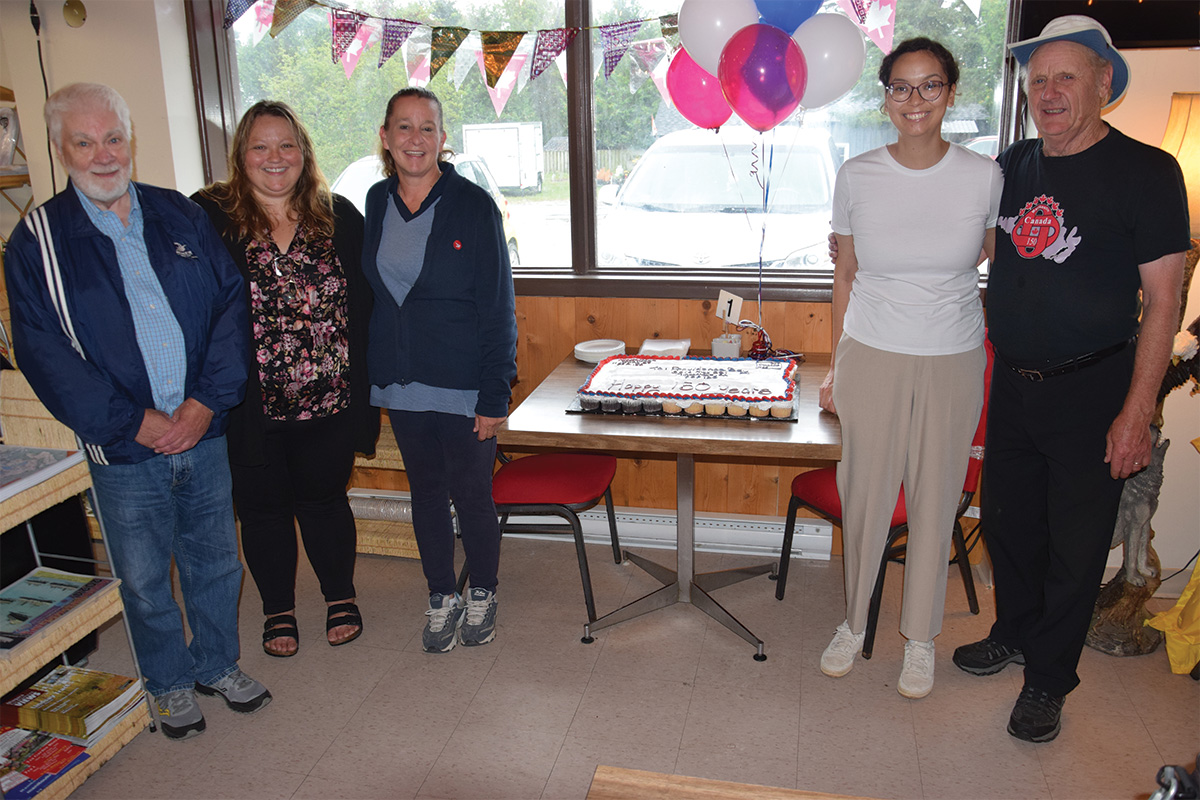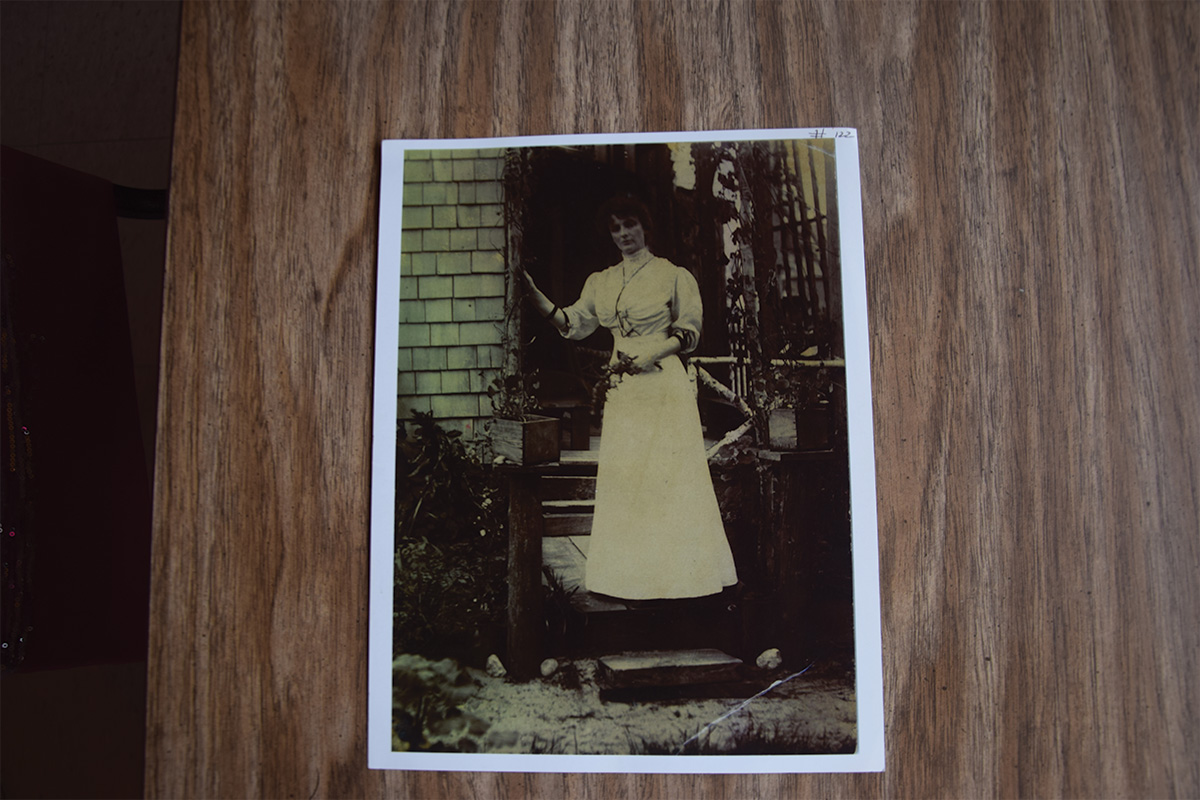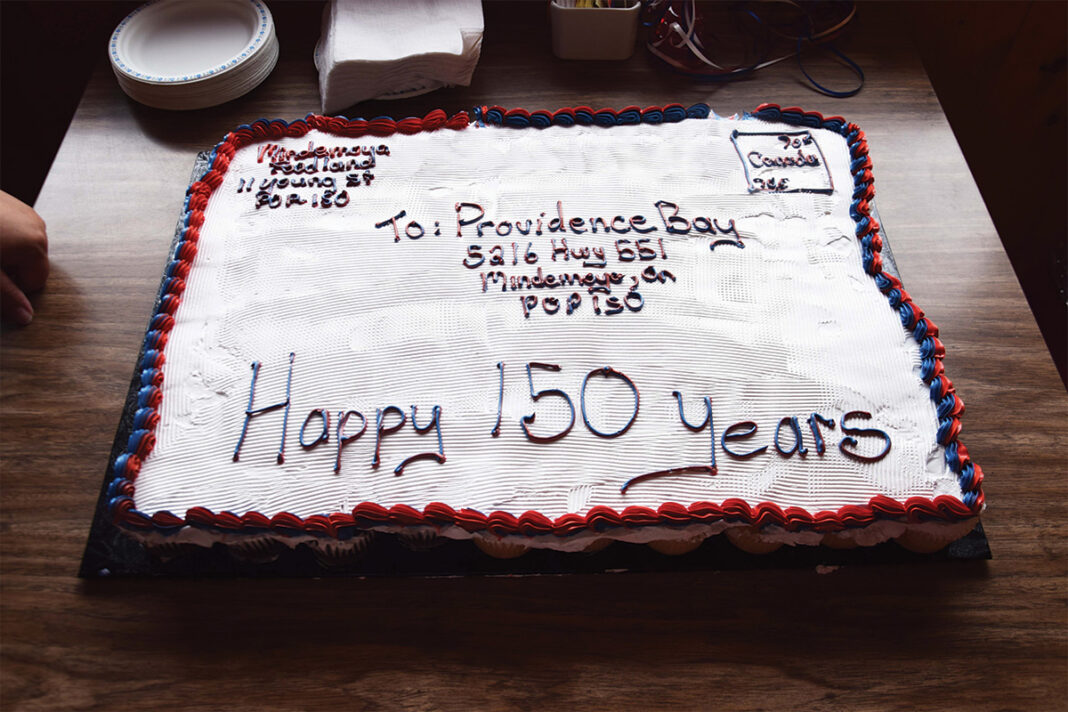PROVIDENCE BAY—A sizable group of local residents dropped into the dining room of the Huron Sands Motel and Restaurant in Providence Bay during one of the last days of August to commemorate 150 years of the Canada Post office serving the community.
The commemoration took place on Friday, August 30 from 2 to 3 pm and featured coffee, cake and an opportunity to learn about the storied history of the post office in a presentation provided by local historian Lyle Dewar.
Central Manitoulin Mayor Richard Stephens presented postmaster Pamela Schieckoff with a certificate recognizing the historic occasion.

“This is a very needed establishment that’s been here for 150 years,” said Mayor Stephens, noting the post office’s function as a vital community hub. “I hope it continues that way. When there was a break in the management (retirement of former postmaster Eleanor Lentir) they did consider closing it, but with discussions and good intentions at Canada Post we still have it and we are thankful for that.”
Postmaster Schieckoff agreed with Mayor Stephens, noting that one of the favourite parts of her job is the opportunity to interact with members of the community.
“It’s wonderful,” she said. “You get to know lots of people and since I’ve been here, I’ve really been happy to see how many people come in and support the post office. And because that’s a lot of chit chatting in a small town like this,” smiled Ms. Schieckoff.
Ms. Schieckoff admits that, while she has served at a number of Island post office locations over the years, she really did not know a lot about the history of the Providence Bay Post Office before taking on the role of postmaster. She was looking forward to hearing Mr. Dewar’s presentation.
Central Manitoulin events coordinator Allison Sloss brought an innovative cupcake cake she had commissioned from Island Foodland. The tops of the cupcakes were placed close together and an icing top laid over it was fittingly in the form of an addressed envelope. The individual cupcakes located below could be picked up by visitors without the need for a knife or cutting.
Mr. Dewar’s presentation began with a large grey original mailbox he had brought with him and a hilarious story of an early replacement postal worker’s experience with the horse and trap borrowed from the postal delivery person he was filling in for. Mr. Dewar opened and closed the door of the mailbox, producing a loud squealing sound. “This sound will be important later,” he said.
Mr. Dewar recalled the story of mail deliverer Andrew Bowden. “He did the mail route for many years, but he usually walked it because he didn’t like horses,” said Mr. Dewar. “One day his brother-in-law Art Sterling said, ‘Why don’t you take my horse and cutter?’ Well, he really didn’t like horses, but he took it anyway.”

The cutter had a cabin with a door and Mr. Bowden had to get out to put the mail in the mailbox. The horse, it seems, had often heard the sound of the mailbox opening and closing and, when he heard the distinctive sound of the door closing, he knew it was time to move on. Unfortunately for the mailman, he was not quick enough getting back in the rig and the horse, keen to get out of the weather and back home, took off down the road home. Mr. Bowden was left to trudge two miles back to his brother-in-law’s to retrieve the rest of the mail.
Mail delivery in those days had some periods of the year when the job was quite onerous. The internet generations will never understand the excitement of the arrival of the Simpson and Sears or Eaton’s catalogues elicited in households across the nation, but the arrival of those massive tomes was dreaded by those who had to deliver them—hundreds of pages of print weigh far more than the digital bits and bytes that made the catalogues obsolete.
“It was so heavy that he would have to take them in different days,” said Mr. Dewar.
Among the items Mr. Dewar brought to the event was a mail tube of the sort newspapers would be delivered to the mailbox—a vital link to all the news in those days before radio, television or the internet began to compete. Mr. Dewar demonstrated the instructions contained on the outside of the tube on how to remove the paper from inside the tube without ripping the contents.
The very first postmaster was John R. McNiven, who took up his appointment on January 1, 1874.





